Travel the Thrifty Way: My Budget Travel Tips
 Having traveled on a budget around Europe, Southeast Asia, New Zealand, Australia and South America, I think I might have a few tips to share on how to travel the thrifty way. Whether traveling in a group or solo, living abroad or traveling fast and taking part in a lot of could-be-budget-busting activities, I’ve managed to do long term travel affordably. To best share my knowledge I’ve broken down my tips into four categories that tend to be the biggest budget drainers while traveling: Transportation, Accommodation, Food & Drink and Activities & Attractions.
Having traveled on a budget around Europe, Southeast Asia, New Zealand, Australia and South America, I think I might have a few tips to share on how to travel the thrifty way. Whether traveling in a group or solo, living abroad or traveling fast and taking part in a lot of could-be-budget-busting activities, I’ve managed to do long term travel affordably. To best share my knowledge I’ve broken down my tips into four categories that tend to be the biggest budget drainers while traveling: Transportation, Accommodation, Food & Drink and Activities & Attractions.
Transportation
Everyone has different comfort levels when it comes to transportation. While it’s easy to say you should always take the cheapest method possible, that isn’t always an option for everyone. Safety, time and other constraints can affect what kind of transportation you can or will take. As someone who has had to deal with those issues, here are a few of my tips.
In general, try to walk. I can’t imagine how much money I have saved over the years (and how many pounds I’ve probably kept off!) just by choosing to walk rather than take a taxi or bus. Of course, you shouldn’t walk alone at night or in sketchy areas, but for the most part, especially in cities, there are going to be tons of other people walking around too. Walking is the best way to get to know a city (even — or especially — if you are absolutely horrible with directions like me!), to discover
hidden treasures… and maybe even meet some friendly locals. Even if it’s just from the bus station to your hostel while dragging your backpack, it will often make arriving that much sweeter!
Consider all your options and take the cheapest one you’re comfortable with. Let’s face it, traveling alone in South America I often took the somewhat nicer overnight buses rather than “chicken buses,” and I was happy with that decision. After being robbed on a cheap night bus in Indonesia the year before, I knew what my limits were. While I spent more money, it was nothing compared to what it would be in other parts of the world, and I made an effort to balance that spending by walking, splitting taxis, or taking cheaper day buses whenever possible. And of course, if you are taking an overnight train or bus, you can save by choosing the cheapest options (seats or semi-recliners vs. beds). But even if you do spring for the bed, remember that you are at least saving money on a night of accommodation!
Investigate transportation deals and consider buying a pass (Eurail, city bus, subway, even air passes) if you’re going to be using transport a lot. Also, in some places you might be able to pair up with people and get a group/family discount pass. In Munich, I was traveling with three friends but we discovered if we had two more people we could get a group transportation ticket when going to Neuschwanstein. We found a couple other people in our hostel who wanted to go and voila, we saved some money! Go for whatever discounts you can get. (ISIC is worth looking into if you’re a student/under 26 and traveling somewhere like Europe or Australia.) We’d also asked for Eurail passes for Christmas that year which meant we spent very little on train travel between countries, making Europe one of the cheapest trips I’ve ever done! (Unbelievable, I know!)
Do some research, especially for flights. (Some pre-trip planning can really go a long way in saving you money!) Look online at websites like kayak, skyscanner (best for Europe), or iwantthatflight (Australia) for deals on flights to or within your destination. There are so many cheap airlines now, especially in Europe, Asia, Australia and the US, that sometimes it is cheaper to fly than take a train or bus. South America is the one place I’ve been where this is not the case. Also when researching flights, check multi-city and open-ended tickets (you can do this on kayak) as well. I found I could actually fly cheaper from Cleveland to Buenos Aires and back to Cleveland from Quito than doing a roundtrip flight to almost anywhere in South America, allowing me to do my entire trip one way overland without having to buy any extra flights.
If you’re not sure what the cheapest mode or company is, don’t rely solely on guidebooks — search online, go to online forums like Thorn Tree and AFAR and ask fellow travelers. This is where you’ll find the best, most current information.
Accommodation
This is another category that varies greatly depending on where you are going. Believe it or not, hostels are not always the cheapest option!
Again, do your research. For one, if you’re looking at hostels online don’t look only at one site. I’ve often found that prices can vary greatly between the big sites. (For example, Hostelworld charges booking fees while HostelBookers doesn’t.) And even then, once you’ve read the reviews you might be able to choose a hostel and then find its website and get a better price that way. Or you often may find that the cheapest place isn’t even bookable online and it’s better just to wait until you’re there.
Broaden your search. In Italy during winter and early spring, we found that, especially in less-touristed place in the south, guesthouses and hotels were actually cheaper than hostels. In fact, after three months of traveling around the country pretty much every weekend, we only stayed in one or two hostels the entire time. In places like Southeast Asia, hostels are few and far between, and you’ll find guesthouses and bungalows are your cheapest options. In Australia, hostels are expensive and caravan parks can be a much cheaper option. And in most places in the world camping will be cheap (if not free).
Split the cost. Even if you are traveling alone, finding other travelers to split a room with might be your best option. It’s just like staying in a smaller, more private dorm. In Southeast Asia I traveled a lot with friends and we’d often spend just $1-2 each a night because we’d get one bungalow for four of us and all sleep on one or two big beds. If you’re comfortable with this, you can save a ton! I found also in South America that some guesthouses/hotels had awkward hostel-ish rooms with, say, three beds that they would happily stick you in for a good price if you happened to have the right number of people. And of course in Australia, especially if you’re keen on the experience of an Epic Aussie Road Trip, there are backpackers aplenty to choose from to split the cost of a van, petrol, and camping.
Look into discount cards. Sometimes it might be worthwhile to get a card for a chain of hostels (sometimes these are free or pay for themselves after a certain amount of stays), such as Hostelling International. Research where you’re going ahead of time to see if there are enough of them along your route (and in your budget) to justify getting the card. (Sometimes it’s not worth it because you’ll find you enjoy independent hostels better and they are often cheaper — I found this to be the case in New Zealand but was stuck having to stay mostly in HI hostels.) There are also organizations for caravan parks (such as Top Tourist Parks in Australia) that have similar programs. (If you’re renting a van, this will probably be included.)
If you’re desperate… be creative. Sometimes you’re budget really just can’t handle another week of $20/night hostels. Of course the top recommendations are to try couchsurfing, or get on Facebook and make sure everyone knows where you are and where you’re going in case one of your friends happens to be studying/working/living abroad or knows someone there. In either case, be sure you’re up front and clear about what’s expected of you. If you’re staying more than a few nights, you might be expected to help out with rent or chores or cooking. Some kind of thank you gift or treating to a meal or drink out might be expected. The last thing you want is to be about to leave and find that they want $100 out of you that you weren’t expecting to spend. Also, you don’t want to show up and sit on their doorstep all night because they didn’t know when to expect you.
Of course, if you’re desperate sometimes you really have to make the most of your situation. While I really don’t recommend it if you can avoid it, I have spent nights or early mornings sleeping on the beach, in a hammock, in the hostel lobby, inside or outside the airport, on a bench, etc. Sometimes it’s not worth spending money on a night’s worth of accommodation if you’re arriving late or leaving early.
Food & Drink
How you spend your money on food and drink is something that varies greatly between people. Some people travel with an emphasis on experiencing the local food, others travel with an emphasis on partying. Moderation and proper judgment are the keys to making these things a part of your travel experience without breaking the bank.
Try, try, try the local food. Notice I put an emphasis on “try”? A great way to try fresh, local food and fill up your tummy without spending too much is to visit the local markets. Learn “May I try…?” in the local language and go to town! Of course, be a good citizen and buy, buy, buy some of what you really love. Prices will already be a bit more affordable at the market, usually. Vendors will love that you are taking an interest in their culture (and language!) and will be happy to let you try some things… and accept your money! You’re making a ground level difference in the lives of the locals, you’re trying some great food, and you’re saving money. Using this method I’ve gotten tipsy off making the rounds of limoncello tastings in Italy, full off fruit and cheese in Australia, and tried some crazy things in Thailand (in a supermarket in the mall, no less!)
Hit the streets. Street food — it’s cheap, usually extremely fresh, and allows you to really interact with the locals. In Europe my diet consisted mostly of falafels and pastries, I won’t lie. In Thailand, chicken and pineapple on a stick were favorite snack-meals. In South America, I often made a meal of alfajores or empanadas…. The (cheap, cheap, cheap) food of gods, I tell you! Even wandering the cities of Australia, New Zealand or the US you will find street food to be the cheapest way to get a delicious meal.
Hit the supermarket. While in parts of Asia and South America you might find it cheaper to eat out (especially if you’re alone), it’s quite the opposite when it comes to
eating out in Australia, Europe, and other more developed countries. Traveling around Oz/NZ you will find most backpackers lugging around extra reusable bags from Woolworths full of food. Of course, sometimes traveling solo it can be a pain to buy bulky boxes of pasta or rice and have to carry them around until you use it all up. Cooking is less fun when it’s for one.
But if you aren’t making friends in the hostel kitchen to share with, there’s always what I call the traveler’s diet. For me, the staples are yogurt and chips (easily found in convenience stores if there aren’t any big supermarkets around), but whatever it consists of, it’s usually a bunch of cheap stuff that can be combined into a meal (or snacked on throughout the day). It may not be the healthiest diet, but it’s cheap! One of my favorite examples is from Italy, when my friend and I gathered together a small feast costing us €1.75 each. It was a combination of bread and yogurt stolen from breakfast (which we had already eaten as lunch and dinner the day before) with some cheap additions from the supermarket to “spark up” the meal.
Spread out your splurges. Especially if you’re traveling in a group, or solo and meeting new friends, it’s tempting to go out for meals. Even (maybe especially) in cheaper regions like South America, it’s easy to find yourself justifying splurges on slightly nicer restaurants, bigger meals, etc. This is a great part of travel, but you have to watch that you don’t get into a pattern. In South America I found myself traveling with a couple girls at one point and we ate out all the time. And then we’d have dessert… maybe a wine or beer… It all added up. As opposed to when I was alone and ate when I was hungry, often snacking on street food or cheap things from the market.
The same goes for drinking. Sometimes it might seem easier to meet people if you go down to the hostel bar and have a few drinks, but even if you’re somewhere where a beer is only $1, you’ll usually end up spending more than you planned. It’s great to have fun and enjoy yourself with new friends while you travel, but it’s important to keep track of your “splurges” and make note of how much you’re actually spending. And if you are going to splurge, keep an eye out for coupons and specials that are often displayed in hostel/hotel lobbies or in traveler magazines and brochures. There are sometimes really great deals for restaurants or bars.
Activities & Attractions
For me, this is one of the expenses on a trip that is the most flexible (obviously you need to eat and sleep somewhere and get around), and can really make a perceived “expensive” destination more budget-friendly and a perceived “budget” destination more expensive. Because of this category, Europe was actually quite cheap for me while, say, South America was a bit more expensive.
Find out what’s free. In Europe or the US, some cities have tons of free attractions. Many famous icons or great museums are free or cost only a small donation. (In fact, some make it appear that there is a set cost when really it is a “suggested donation.”) And many cities have a day of the week or month that most museums or attractions are free. Make sure to research these and make a list so you can save as much as you can.
Look into the ISIC card. Again, this is most useful in Europe (perhaps a bit in Australia), where it can get you some great discounts on museums and attractions. On the
ISIC website you can search by city to find out what kind of discounts you can get. I admit I didn’t use my ISIC a ton, but I probably got at least my money back. In some cases just your student ID card is sufficient, so bring that along. (Especially if it doesn’t have an expiration date — I was so lucky, until it was stolen along with my purse in Jordan.) Also, ask at your accommodation if there are any discounts you can get by staying there. In Melbourne we decided to go see a movie and found that just because we were staying at a hostel we got a really great discount on our tickets. What a great surprise!
Make a list. I guess I’m a bit of a list-obsessed person as it is, but sometimes it helps to make a list of all the big-money things you could possibly want to do on a trip and sort them out by importance. Price out your must-dos and go from there with the rest of your budget. And allow some money for unforeseen opportunities. Which brings me to…
Be flexible. No matter how much you research, you might not realize that you’ll ever want to go whitewater rafting, until you meet some fellow travelers who talk you into it. Or perhaps you love diving so much you absolutely have to do it again. In New Zealand, there were just so many adventurous things to do, and I was a point in my life where I really needed to push myself and “Just say yes!” I gained invaluable confidence and guts from those experiences.
On the other hand, when I went to South America I knew going to the Galapagos was one of my life long dreams, but because of the cost I just couldn’t allow myself to bank on going. After talking to other people about it and mentally realizing, “But I am here and it is so close!” I knew I couldn’t NOT go. I made the necessary adjustments, I skipped out on a few other budget-draining activities, and I made it happen. And I’m glad I did. Sometimes you have to think about it as being thrifty in a different way… you can either spend the money now and do it while you’re here, or spend even more money later to come back and do it — because some things you’ll never be able to let go! And that’s what travel is all about: experiencing life and adventure and making things happen!
One last tip
Sort of tying everything together, I offer up one last tip that really requires the most discipline and dedication. It’s definitely not for everyone, but it is probably THE best way to stay on a budget. What is it? Keep track of all your spending. Carry around a small notebook, keep a running spreadsheet on your computer. This is the one way where you can truly see how much you spend in certain areas and realize what adjustments you need to make to keep from going over budget. No, it’s not fun (well, maybe it is for some people — it is kind of interesting to analyze later on), and it’s not always easy (“Wait, how many beers did I have last night?”), but it works. I definitely don’t always do this, but I did it almost religiously in South America and on our second Australian road trip (mostly to keep us from fighting about who spent more on what), two trips I really couldn’t afford to run out of money on.
Good luck on your thrifty travels!
Brooke vs. the World has asked travel bloggers to put together their best thrifty and resourceful travel tips for a helpful, free ebook. If you think you’re thrifty and would like to participate, check out the official rules.

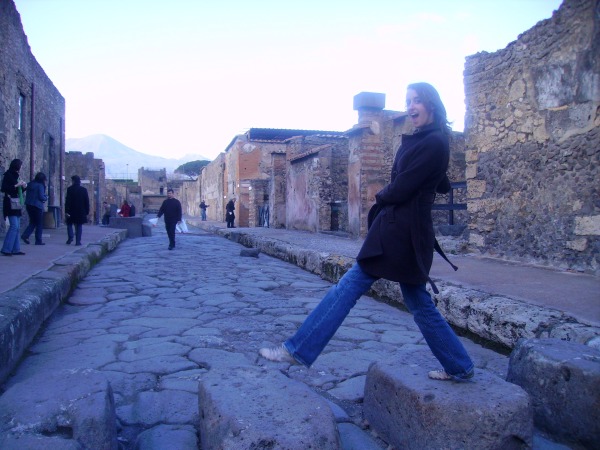
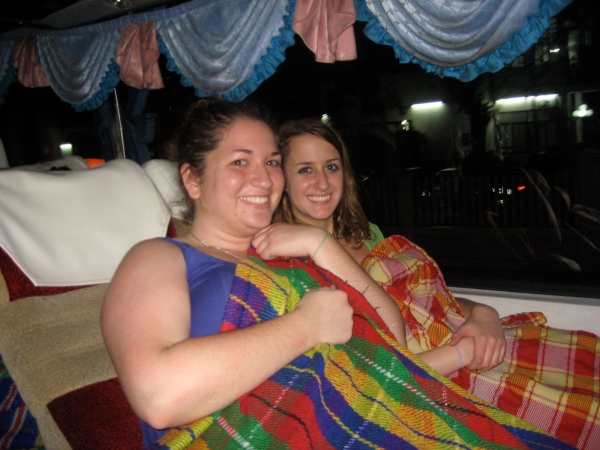
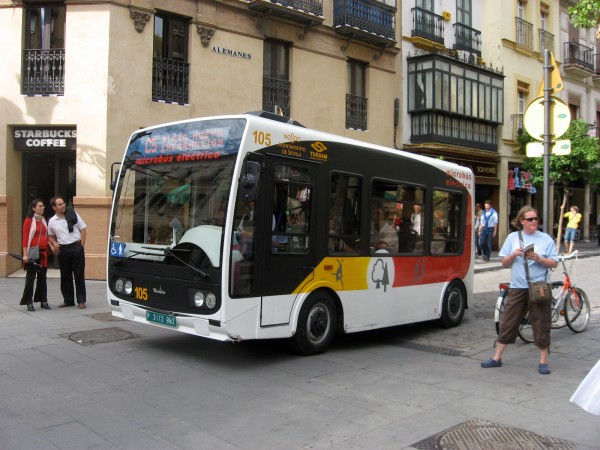
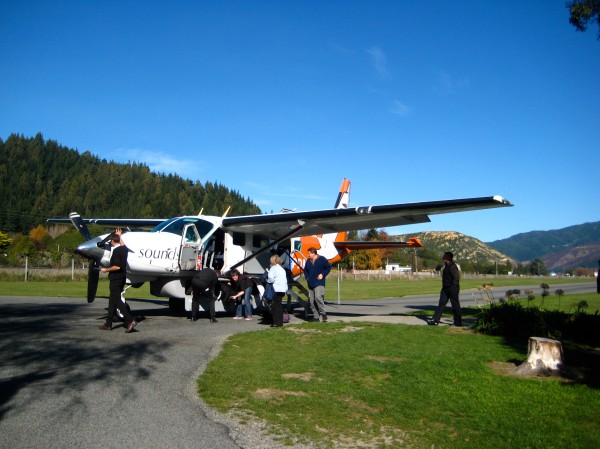
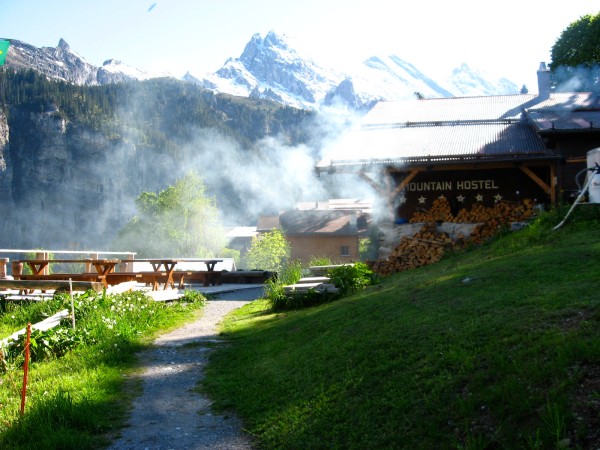
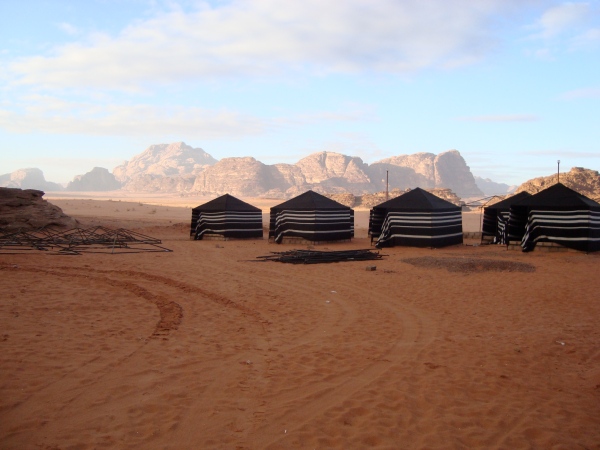
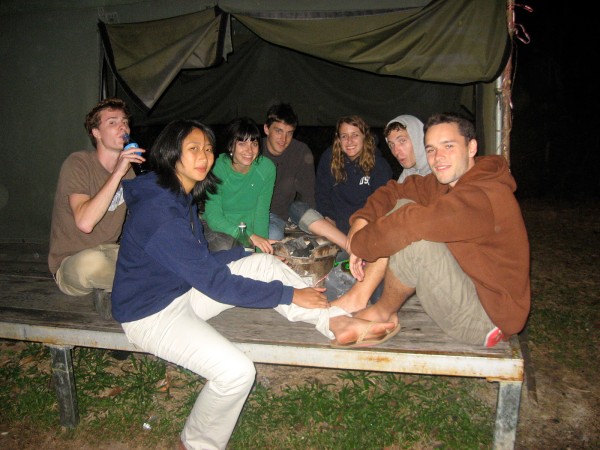
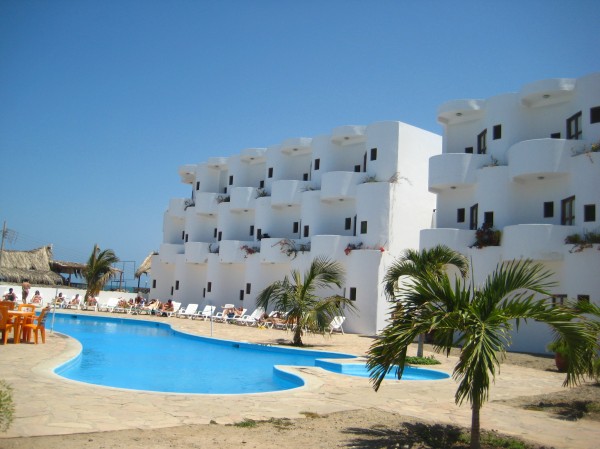
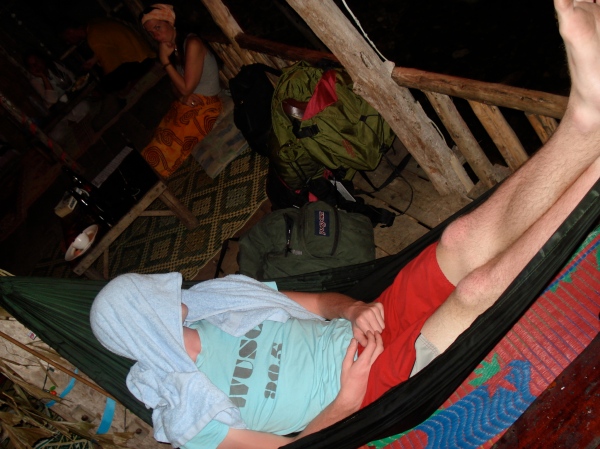

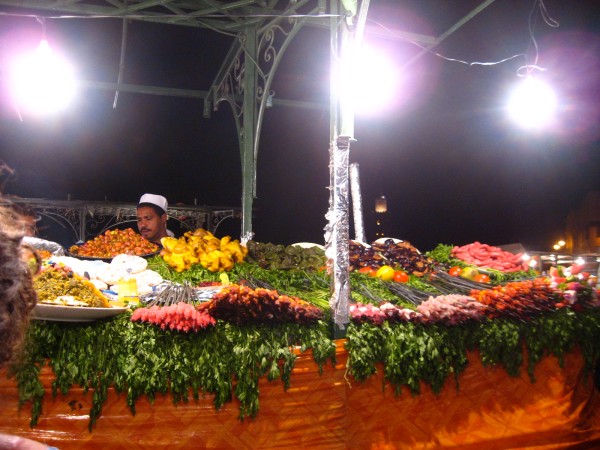
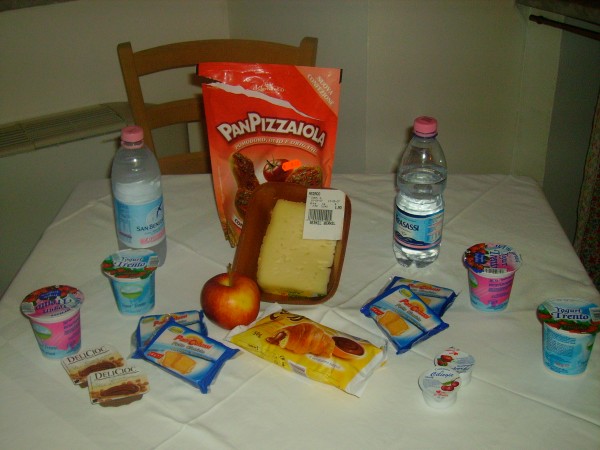














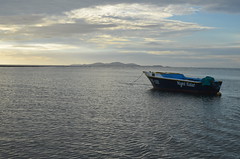
Nice! Thanks so much. I appreciate your comment about the “perceived” costs; I’m working on getting my own expectations in line for various legs of our upcoming trip. I’m carrying around the notion that South America will eat up a big chunk of money as opposed to South East Asia…I’m hoping to be pleasantly surprised if parts of S. America turn out less expensive than anticipated, and I’m trying to keep rational about how many cheap days I think I can squeeze out of SEA.
Wow, what a thorough post, I don’t even know where to begin! All great tips! I love the final tip though of keeping track of it all. We don’t realize how quickly our spending can get out of control if we don’t track it all. Best tip of all IMO! 😀
Rachael, you’re the real deal! Loved the post and pics – you’re like the budget maverick of international travel 🙂
Great thorough post with creative ideas. Well done.
Great tips. Every time I find a new tip or resource on a post like this I throw it into my Google Site resource list. Organize it by hostel, flight, finance or employment and then location so when I set off to travel I have the best resource list possible.
I recently just returned from Ireland and my trip validated my philosophy that traveling thrifty is more of an experience to me than traveling lavishly. I love traveling solo and I love traveling on a budget. I’m impressed with your determination to travel around the world and do it. I have only been able to do smaller trips while finishing school over the last few years and am looking forward to an abroad experience this coming year – hopefully teaching somewhere super awesome. Looking forward to reading more of your blog and love that I have found another adventurous woman who travels and experiences the larger sense of the world. Keep roamin!!
Christine
http://www.cperigen.wordpress.com
http://www.roamyoursoul.com
http://www.roamlife.com
I blog frequently and I seriously thank you for your information.
The article has truly peaked my interest.
I’m going to bookmark your website and keep checking for new information about once per week. I subscribed to your RSS feed as well.
Wonderful blog! I found it while surfing around on Yahoo News.
Do you have any tips on how to get listed in Yahoo News?
I’ve been trying for a while but I never seem to get there! Appreciate it
Highly energetic article, I enjoyed that bit. Will there be
a part 2?
Very quickly this web page will be famous among all blogging visitors, due to it’s pleasant posts
Good day! This is my 1st comment here so I just wanted to give a quick shout out and tell you I genuinely enjoy reading through
your articles. Can you suggest any other blogs/websites/forums
that go over the same topics? Thanks a ton!
Having read this I believed it was rather informative. I appreciate
you finding the time and energy to put this short article together.
I once again find myself spending way too much time both reading
and posting comments. But so what, it was still worth it!
I think this is among the most important information for me.
And i’m glad reading your article. But should remark on some general things, The website style is perfect, the articles is really excellent : D. Good job, cheers
Hi there! I could have sworn I’ve been to this site before but after browsing through some of the post I realized it’s new to me.
Anyhow, I’m definitely happy I found it and I’ll be bookmarking and
checking back frequently!
If you desire to increase your experience simply keep visiting this
website and be updated with the most up-to-date news update posted here.
You should check out TradeCottage.com too! It’s a new up and coming website supporting the Shop Local & Shop Small movement which is awesome to incorporate into your traveling! 🙂
Search by postal code/city (WORLDWIDE) and/or Business/Organization/user name, category, keyword or a service/product specific search and locate Small & Local Businesses/Individuals/Organizations/Events & more in that area! (Travelers can help grow the network by helping refer more people and their favorite travel spots!)